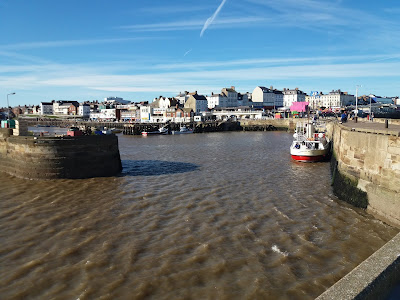This is now the 8th festival, and the organisers claim it is bigger and better than previous events. You could argue that they would say that, but after last year’s festival there was a lot of soul-searching, particularly in relation to issues of space, staffing and over-crowding, and a number of changes have been made.
I haven’t been involved with the organisation of this year’s event, but will no doubt find out whether the changes are working, when I turn up to do my stint behind the bar on Saturday evening. The idea behind the festival is to encourage visitors to travel up and down the line where they can sample different beers at each of the three stations which constitute the Spa Valley Railway.
 The main bulk of the beers (and ciders), can be found in the Victorian Engine Shed, which acts as SVR’s headquarters. The shed was once part of the former Tunbridge Wells West station, but there will also be a range of beers at both Groombridge and Eridge stations.
The main bulk of the beers (and ciders), can be found in the Victorian Engine Shed, which acts as SVR’s headquarters. The shed was once part of the former Tunbridge Wells West station, but there will also be a range of beers at both Groombridge and Eridge stations.The latter acts as an entry point for those travelling down to the festival by train, as Eridge station provides direct, cross-platform connections with Southern rail services from London Bridge, Croydon and Uckfield.
The organisers claim to have around 200 Real Ales, a figure which includes 25 Green Hop Ales. There will also be a craft beer bar featuring UK Keg & European Beers, plus over 30 Ciders. These bars are located in the engine shed, along with most of the real ales. I have just seen the beer list and have to say that it looks amazing.
The railway people will be operating a 50 minute interval service, with trains running down to both Groombridge and Eridge Stations.
As mentioned previously, there will be beers on sale at those locations and on the trains themselves, but also included are:
• Trains to High Rocks, Groombridge & Eridge.
• Fullers Butcher BBQ.
• Thai Food Stand.
• Live Entertainment throughout the event at selected times.
• Ticket office, toilets and main departure point of train services.
• Station shop stocking a large variety of railway and children's products.
• Train travel from 17:30 is just £10, £5 for CAMRA and Spa Valley members on production of a valid membership card.
A potted history of the Spa Valley Line:
During the latter half of the 19th Century, Tunbridge Wells had two stations built by rival companies; Tunbridge Wells Central, opened in 1845 by the South Eastern Railway, which is now the sole mainline station, and Tunbridge Wells West, which was opened by the London Brighton & South Coast Railway in 1866. This former station is the headquarters of today’s Spa Valley Railway.
 Around 1876, these two stations
Around 1876, these two stations were linked by a tunnel enabling connections between the London to Brighton and the London to Hastings lines. From Tunbridge Wells West there were direct services to the south coast at Brighton and Eastbourne and northbound to London Victoria. Passing into the ownership of the Southern railway in 1923, the route became a very popular cross country link with over 100 trains passing a day.
During the latter half of the last century, as the popularity of the motor car as a means of travel increased, services started to be cut back, and many of the surrounding lines closed. For example Eridge to Hailsham branch (the Cuckoo Line) in 1965, East Grinstead to Groombridge in 1967, and then Uckfield to Lewes in 1969.
This left the remaining lines through Tunbridge Wells West both isolated and exposed. Finally, on 6th July 1985, the Tunbridge Wells to Eridge section closed. The depot at Tunbridge Wells West survived for another month and a few years later, the link to the mainline at Birchden Junction was finally removed. A Sainsbury's superstore now occupies much of the site of the former West station, although the old station building survives, and today houses a restaurant and hotel.
Shortly after closure, a preservation society was formed with the aim of restoring train service on the railway, and after a herculean effort by local volunteers, the line was reopened through to Groombridge in August 1997.
Many improvements have been made since then including the introduction of new steam locomotives and rolling stock. In 2005, the railway marked the 20 years since the closure of the line by opening an extension just short of the former Birchden Junction, a further mile from Groombridge.
In mid 2007, after discussions with Network Rail, work began on extending the line through to Eridge. Contractors were hired to restore the section of running line parallel to the mainline between Birchden Junction and Eridge, and after numerous delays and complications, the extension finally opened to the public in March 2011.

I appreciate this is rather short notice, but do try and come along if you can. Surely there can’t be many better ways of spending a fine autumn weekend than sampling a few of the excellent range of beers on offer at the festival, especially when there’s the added attraction of riding up and down this preserved line, through the glorious Kent and Sussex countryside which lies between Tunbridge Wells and Eridge.
Further details of the beers and ciders, opening times, train timetables and fares can be found by clicking here on the SVR website.














































